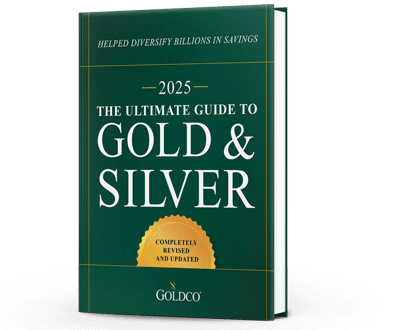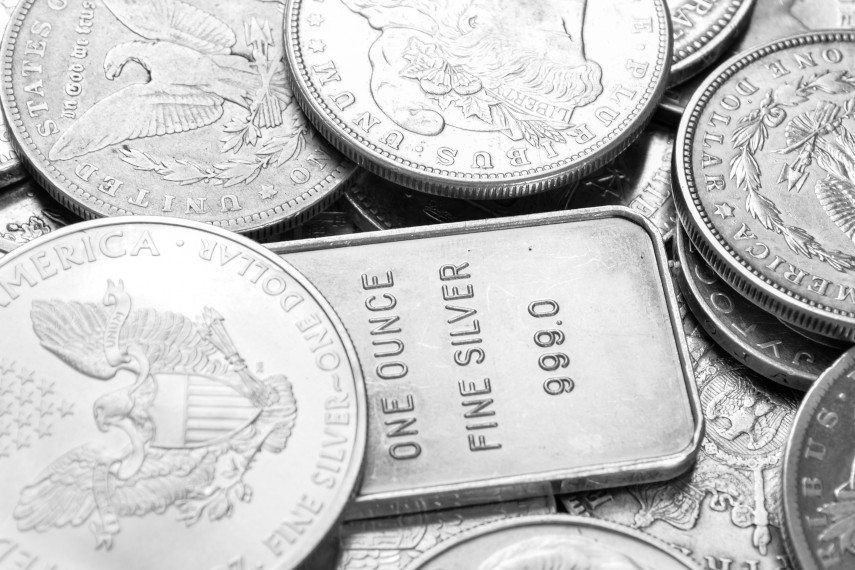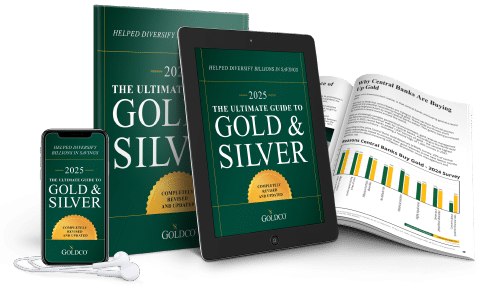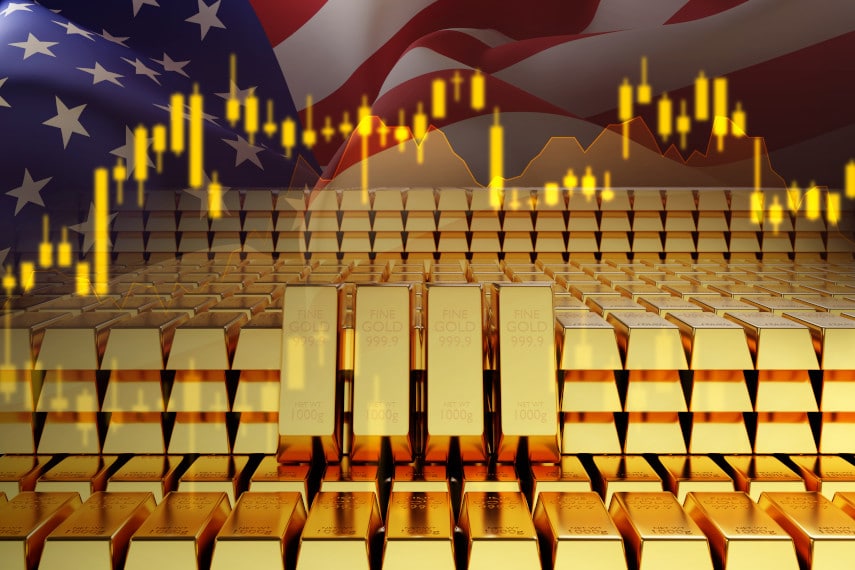
Growing economic uncertainty is gnawing at Americans, with tariff spats, problematic inflation, and a weakening job market all contributing to that unease. In response, Americans have begun pouring more and more money into precious metals, helping push gold and silver to record high prices.
Memories of the 2008 financial crisis remain fresh in many people’s minds, and fear of another similar crisis is growing. Worries about both the economy and their own financial well-being is driving many people to look for ways to help protect themselves against the possibility of an economic downturn.
One way they’re doing that is by looking for safe haven assets, like gold, that can help safeguard their assets. But is gold the best choice as a safe haven asset? And how much could gold be worth in the event of an economic downturn?
3 Key Points
- Uncertainty and fear surrounding the economy is causing many people to look for safe haven assets
- Gold has a history of performing well during economic crises
- Gold can be a useful asset in a portfolio, with many different ways to purchase gold, including buying gold through a gold IRA.
Could the US Economy Collapse?
How likely is it that the US economy could collapse? If you’re talking about a complete collapse then honestly, it’s probably not likely at all.
If you remember the 2008 financial crisis, which was one of the worst crises in most people’s lifetimes, the US economy only contracted 4.3%. But that relatively small contraction was enough to send stock markets tumbling over 50% and wipe out trillions of dollars of savings from Americans’ retirement accounts.
This should serve as a warning that even a small contraction in economic growth could have an outsized impact on your retirement savings. And with Americans currently holding nearly $46 trillion in retirement accounts, a stock market collapse could be just as catastrophic as an economic collapse.

Could the US Dollar Collapse?
Another concern that many Americans have is the potential for a US dollar collapse. The US dollar index has fallen nearly 10% so far this year, leading to fear that the dollar could fall even further.
The UK pound sterling used to be the world’s reserve currency, until the US dollar dethroned it after the end of World War II. But can the dollar sit atop its perch forever?
Continuous inflation has eroded the dollar’s purchasing power, especially as compared to gold. When the US adopted the gold standard in 1900, the dollar was defined as 25.8 grains of 90% pure gold, which meant that an ounce of gold would have been worth $20.67.
Even as late as 1971, the market price of gold was only $38 an ounce. But today the gold price is over $4,000 an ounce, an increase of over 10,000% since 1971, while the US dollar has lost 87% of its purchasing power since then.
While the dollar is still the dominant world currency today, how long can we continue taking that for granted? Slow, steady currency devaluation is eroding not just the dollar’s purchasing power, but also its position as a desirable world currency.
More and more central banks and governments are looking to move away from the dollar in the future. In fact, foreign central banks today hold more gold than they do US Treasuries.
While the dollar likely won’t collapse suddenly, as for instance has happened to currencies in hyperinflationary crises, its ultimate fate could end up being just to slowly fade away into irrelevance, especially if gold takes center stage.
Gold’s Performance During Economic Crises
With the continuing devaluation of the dollar being much discussed, one of the questions many Americans have is how they can help safeguard their financial well-being in the face of the devaluation of the currency in which all of their financial assets are denominated.
As many people have done throughout history, many people today are choosing precious metals like gold to help protect and hedge against this currency devaluation.
Gold has a tendency to maintain its purchasing power over the long term. And during crises the gold price can make significant gains.
During the aftermath of the 2008 financial crisis, for instance, the gold price increased over 260% from September 2008 to September 2011. Then during the 2020 COVID recession the price of gold rose over 18% from March 2020 to June 2020.
Finally, during the 2023 banking crisis, the gold price rose almost 8% in the months after Silicon Valley Bank and First Republic Bank were closed.
Gold’s history of price performance during periods of crisis and uncertainty helps make it a strong safe haven asset people choose to help safeguard their wealth during economic crises.
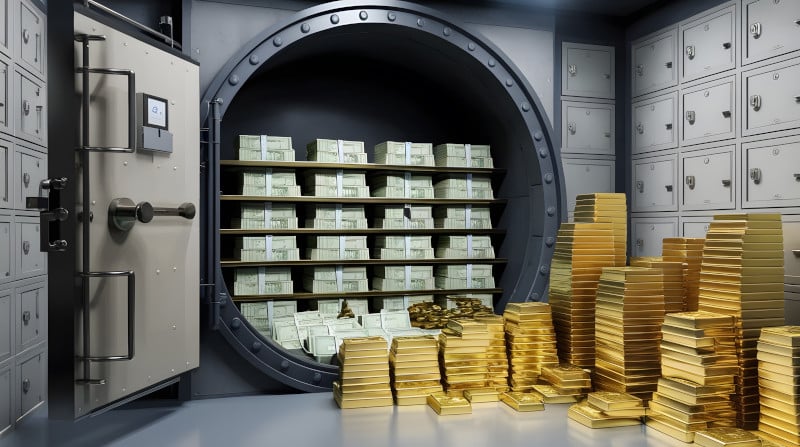
Gold as a Safe Haven Asset
When people think of safe haven assets, they think of assets that go up in price when other assets are going down. Safe haven assets are those that can help hedge against the risk of loss, helping minimize overall losses to an asset portfolio.
Given gold’s traditional role as a safe haven asset and its performance during and after the crises of 2008, 2020, and 2023, it certainly seems to fit the bill as a safe haven asset. But how might gold fare in the event of a more severe economic collapse?
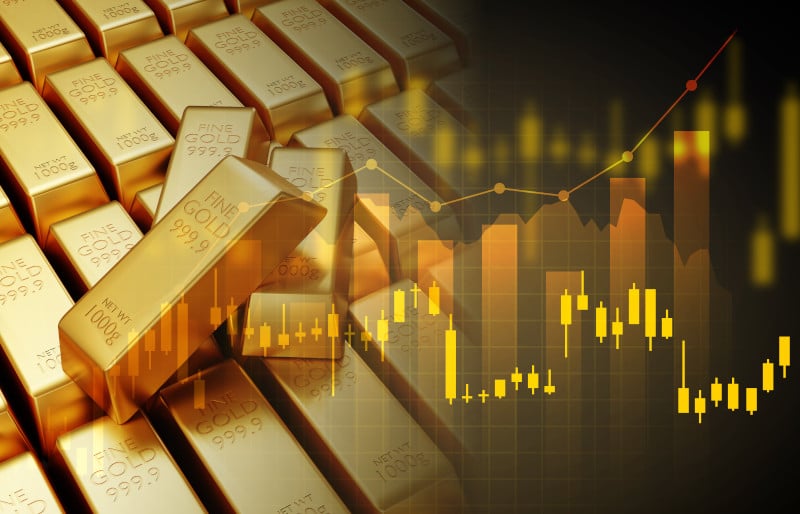
Factors Impacting the Gold Price
Like other metals, the price of gold is driven by the interplay between supply and demand. So let’s look at some of the factors that drive that supply and demand.
Gold Demand
According to the World Gold Council, gold demand is broken up into four different categories:
- Jewelry Fabrication
- Technology
- Investment
- Central Banks
Over the past fifteen years, jewelry and investment demand have been the two major drivers of gold demand, although central bank demand has grown significantly over the last three years.
WGC statistics show that jewelry fabrication normally makes up about half of overall gold demand. Technology, which includes electronic and industrial use of gold, tends to make up ten percent or less of gold demand.
Investment, which includes demand for gold coins and gold bars, tends to average just over 25% of gold demand each year, although it can fluctuate based on underlying economic conditions. Central bank gold demand has tended to average around 10% of gold demand each year, but has exploded in recent years to make up over 20% of gold demand for the past three years.
Gold Supply
The World Gold Council lists two major factors that influence gold supply:
- Total Mine Supply
- Mine Production
- Net Producer Hedging
- Recycled Gold
Total mine supply is the sum of gold production from mines plus the hedging activities of producers. This total mine supply normally makes up about 75% of total gold supply. The remaining supply of gold comes from recycled gold, which can come from a variety of sources, including spent electronics.
With the gold price having hit several record highs this year, we might expect to see more people selling gold, which could impact the supply of gold from gold recycling. But would that be enough to have an impact on gold prices?
Gold vs. Other Precious Metals
Gold is arguably the “gold standard” when it comes to safe haven assets. But why? And how does gold compare to other precious metals when it comes to acting as a safe haven?
Probably the closest safe haven precious metal to gold is silver, which has long played second fiddle to gold. And silver, unlike gold, normally sees a significant portion of its demand coming from industry, not from safe haven buying.
In terms of price performance, silver can be a lot more volatile than gold. While silver’s price growth in the aftermath of the 2008 financial crisis was far higher than that of gold, with the silver price peaking at 534% from its 2008 lows versus 266% for gold, silver fared worse during the acute phase of the crisis.
From October 2007 to March 2009, stock markets fell by over 50% while silver lost 3%. Gold, meanwhile, gained 25% during that same time period.
Gold also is generally the first precious metal people turn to during times of unease, and its price often rises due to safe haven buying before silver, which tends to lag.
In 2025, for instance, the gold price rose 23% from the beginning of the year until the weeks following “Liberation Day”, while the silver price only rose 12%.
How Economic Collapse Could Impact Gold
If the dollar were to collapse, or were otherwise to be dethroned as the world’s reserve currency, it could cause economic pain and hardship for Americans. We have become so accustomed to the dollar’s acceptance around the world that a world without the dollar as king would require some difficult adjustments.
The post-Bretton Woods monetary order that has existed since 1971 is the only time in history that the whole world has functioned without a silver- or gold-backed monetary standard. We literally are living in an ongoing monetary experiment.
What will the result of that experiment be? Will a purely fiat monetary system continue to survive for decades or centuries more, or will we eventually revert to a commodity-backed monetary system such as existed until 1971?
Central banks have been major buyers of gold for the past several years, and today central banks once again hold more gold reserves than they do US dollar reserves. Coupled with the persistent rumors that Russia, China, and other BRICS countries are stockpiling gold in order to introduce a gold-backed world currency to rival or supplant the dollar, it seems that dissatisfaction with the dollar is definitely working to gold’s benefit.
What would it take for something like that to happen?
Right now it seems that the dollar is still riding high, but can that last forever? Crises have a tendency to topple the existing order and lead to new arrangements.
World War I saw the demise of the international gold standard, while World War II saw the rise of the Bretton Woods system and the rise of the dollar. With fear of recession growing today, war ongoing in Eastern Europe, and the threat of China invading Taiwan, it isn’t outside the realm of possibility that a crisis could materialize over the next decade that could accelerate the dollar’s downfall.
Safe haven gold demand is already climbing just on fear of what could happen to the US economy. If the US economy were to face a significant crisis, or if a major world war were to erupt, how much more might Americans demand gold coins and gold bars as safe haven assets?
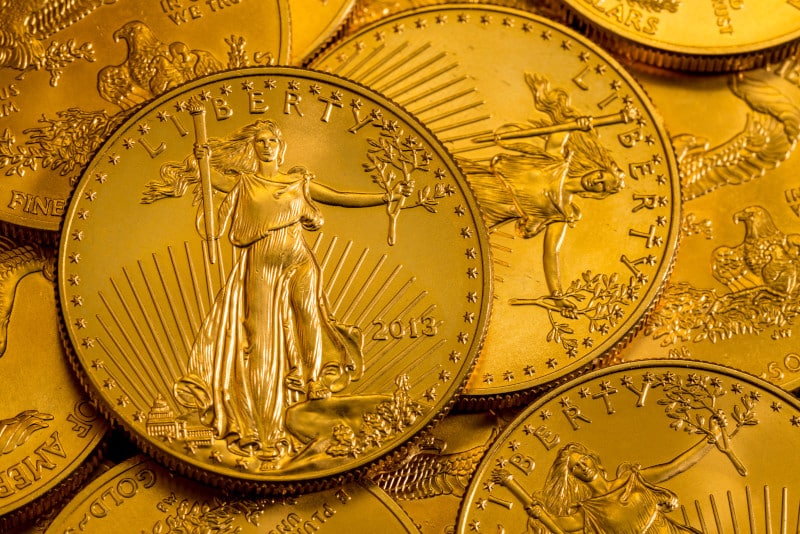
Gold in Your Portfolio
If you’re considering gold as a safe haven asset, one question you might have is how to get your hands on that gold. For that, you have numerous options available.
Gold ETFs
One popular option today is to purchase shares in gold exchange-traded funds (ETFs). This doesn’t actually get you physical gold, just shares in a fund that owns gold.
You can’t actually redeem your ETF shares for gold, just for cash. And you don’t have to look hard on the internet to find discussions of the drawbacks of gold ETFs.
Still, shares in gold ETFs are easily purchased, easily sold, and are available through most major brokerages. But would they benefit you in the event of an economic collapse?
In a severe collapse, in which the entire financial system is teetering on the brink, would owning shares in a fund that owns gold benefit you? Or would you rather have ready access to physical gold that you can hold in your own two hands and readily sell or exchange?
Gold IRA
Gold IRAs are another popular option today, as they offer the advantage of ownership of physical silver coins or silver bars as well as the same tax benefits as any other IRA account.
You can even fund a gold IRA with a tax-free rollover from your existing 401(k), 403(b), TSP, IRA, or similar retirement accounts, allowing you to bypass the normal IRA contribution limits when funding your IRA.
The downside to a gold IRA is that your gold has to be stored at a bullion depository. But unlike a gold ETF, you actually own the physical gold coins or gold bars within your gold IRA and you can take physical delivery of the gold in your IRA when you choose to take a distribution of assets.
Buying Physical Gold
If you’re really worried about a major economic collapse or devaluation of the dollar, there’s always the option of buying physical gold coins or gold bars and storing them yourself.
Direct cash purchases remain a popular option for those you think that if you can’t hold it, you don’t actually own it. While you have to figure out storage, security, and insurance on your own, for many people there’s no substitute when it comes to being able to put their own hands on their gold assets.
Help Protect Yourself Against Economic Collapse
No matter which way you choose to buy gold, Goldco has options available to you. We’ve helped thousands of Americans benefit from owning precious metals, and we’re committed to helping all of our customers take advantage of the benefits of owning gold and silver.
Whether you want to purchase gold directly with cash or start a gold IRA, our specialists can help you navigate the gold purchase process. With over 7,000 5-star reviews from our customers, you can rest assured that we’ll do everything we can to make your gold purchase process go smoothly for you.
With over a decade of experience and over $3 billion in precious metals placements, we have worked hard to make ourselves one of the best gold companies in the country. Give Goldco a call today and learn more about how you can put gold to use in helping to safeguard your financial well-being against a potential economic crisis.





